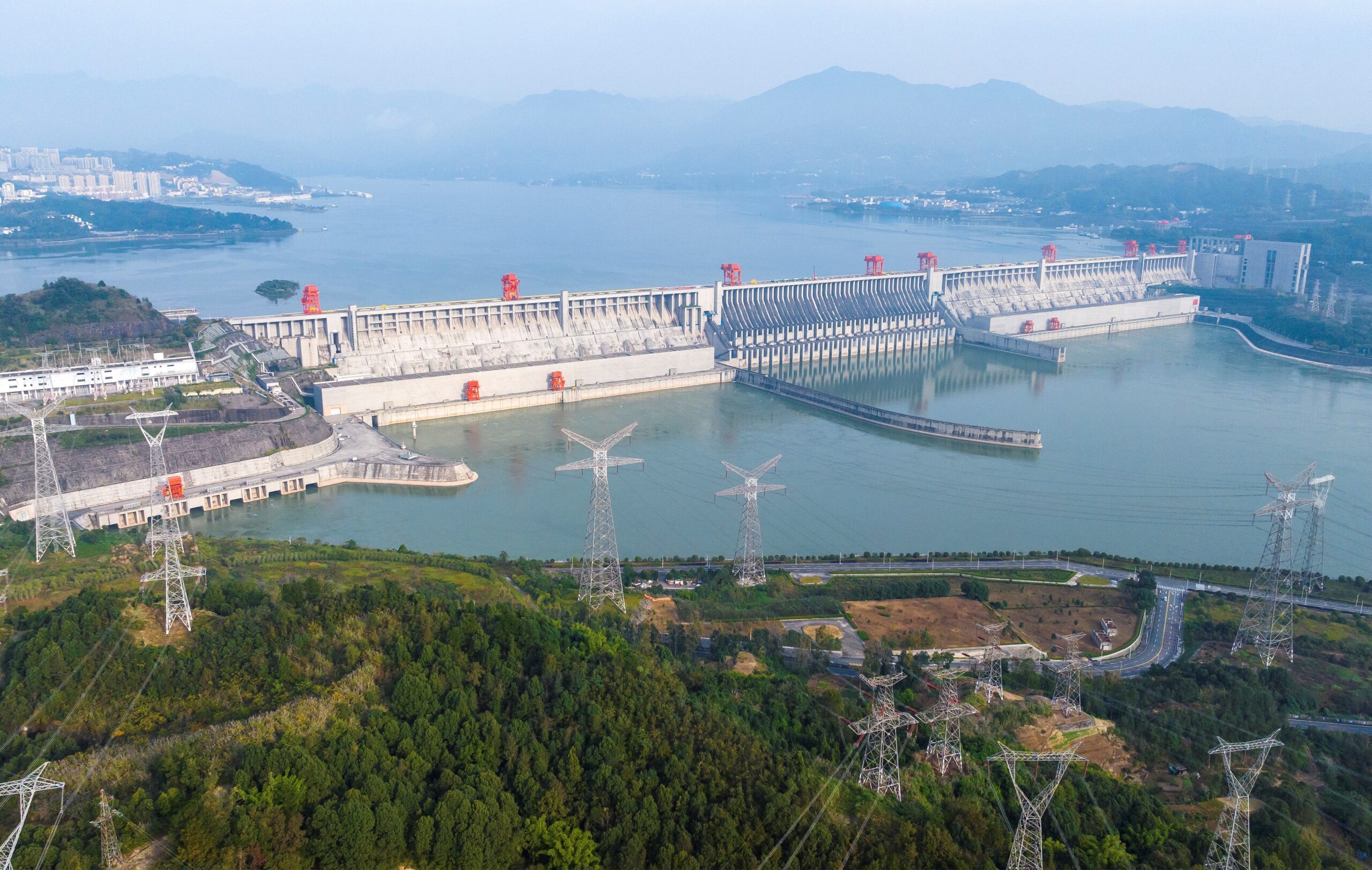How many times have you said, “I wish the days were longer”? Well, NASA scientists say the construction of China’s Three Gorges Dam actually did make the days longer, by slowing the rotation of the Earth. Hallelujah! Extra time you can use to learn a new language, catch up at work, or even better, sleep in.
This raises a lot of questions. First of all, is it true? Did the dam actually make our days longer? And if so, why? And just how much extra time are we talking about here? I mean, you need to plan your schedule, right? Should we build more giant dams to get even more time?
Angular Velocity
To answer these questions, we need three basic physics ideas: (1) angular velocity, (2) angular momentum, and (3) the moment of inertia. I’ll explain each of these.
First, here’s a little experiment that you can do yourself. If you have a rotating desk chair, get it spinning with your feet off the ground and your arms tucked in. Now, before you throw up, extend your arms. It slows you down, right? Here’s a version with a human on a rotating platform:

Video: Rhett Allain
The speed of rotation is what we call angular velocity, represented by the Greek letter omega (ω). Why “angular”? Here’s a two-dimensional example below. Think of this circle as centered on an xy coordinate plane. I’ve drawn a radius (R) to a point on the circle where it cuts the horizontal axis:

Illustration: Rhett Allain
Now imagine this point moving counterclockwise around the circle. As it does, the radius line sweeps around like the second hand on a (backward) clock—and at any point in time, it forms an angle (θ) with the x axis. The faster the point moves around the circle, the faster that angle changes. Hence, “angular velocity.”
To be specific, ω is defined by how much the angle changes (Δθ) in a certain increment of time (Δt). So if the spinning girl above completes one rotation in one second, we say she has an angular velocity of 360 degrees per second—or using radians, 2π radians per second.
Actually, you know this concept from your car. Engine speed is measured in revolutions per minute. What it’s counting is how many times the crankshaft rotates in a minute, usually anywhere from 600 to 3,000 rpm’s for responsible citizens.
The Moment of Inertia
Inertia is basically the same thing as mass. What does mass do in physics? Well, it’s a property of an object that makes it more difficult to change its motion. It’s much harder to roll a heavy bowling ball than a light baseball. On the other end, it would be harder to stop the bowling ball too. More mass means more resistance to change—more inertia.
The “moment of inertia” is the same thing, but for rotational motion. Let’s say you have a car up on blocks. If you grab a tire and apply some torque to spin it, you increase its angular velocity. Now do the same thing with a bicycle wheel. Way easier, right? And it’ll be going faster than the heavy car wheel. This is because the bike wheel has a lower moment of inertia.
We know the inertia of an object depends on its mass, but the moment of inertia (I) also depends on where that mass is located, relative to the axis of rotation. Say you have two wheels of equal radius and mass, but one has all the mass on the outer part of the wheel and the other is just a solid disk. The disk has more of its mass closer to the axis of rotation, so it will have a smaller moment of inertia. See where this is going?
Angular Momentum
There’s one more thing to think about: angular momentum (L). This is just the product of the angular velocity (ω) and the moment of inertia (I):

Illustration: Rhett Allain
Now, if you have a system with no external interactions—like a person spinning in a chair, with no one pushing—the angular momentum (L) is constant. We say angular momentum is conserved. But look at the right side of the equation: For a given value of L, if you increase the moment of inertia (I), the angular velocity (ω) must decrease.
Dams and Days
So back to our original questions! The Earth is an isolated rotating system with a constant angular momentum. This means that if you alter the distribution of mass on Earth, the moment of inertia will change, and that will change the angular velocity.
This is exactly what a dam does. The water wants to move downhill to the sea, but a dam prevents that, so it holds the water’s mass farther away from Earth’s axis of rotation—just like spreading your arms in a spinning chair. So yes, a big dam really can change the speed of Earth’s rotation!
Now for the fun part. Let’s estimate how much longer an Earth day is because of the Three Gorges Dam. First, here’s an extremely exaggerated diagram:

Illustration: Rhett Allain
The dam makes a big block of water (which we call a lake). Notice that the latitude (θ) of the dam site determines how far it is from the planet’s axis of rotation. As you move from the north pole toward the equator, that distance increases. So if you want to make the day as long as possible, in addition to stacking up water at a high altitude, you should build your dam near the equator.
OK, let’s calculate the change in the moment of inertia, ΔI. We can find this with the following equation. Don’t worry about the math! I just want you to see how it depends on the latitude (θ), the mass (m) and depth (h) of the water, and the radius of the Earth (R):

Illustration: Rhett Allain
We need to fill in these variables with actual numbers. Luckily, we have Wikipedia. So, given an initial value of Earth’s moment of inertia (I1), I can use ΔI from above to find the change in the angular velocity (Δω) caused by the dam:

(If you want to see my numbers and calculations, they’re all in this Python code.)
After crunching the numbers, I get an Earth day that is 5.3 x 10–6 seconds longer. Yes, that’s 5.3 extra microseconds! Due to our simplifying assumptions that’s likely an overestimate, but the increase is real. I grant you, there’s not a whole lot you can accomplish in 5 millionths of a second, but it shows that human activity really can alter a planet’s rotation.
It also means there’s a whole bunch of other things we could do to get still more time in the day. We could build skyscrapers all across the Great Plains. Or heck, we could just have everyone on earth stand up at the same time. That would also increase the moment of inertia and slow the Earth’s roll. I’m getting up from my desk right now—care to join me?




